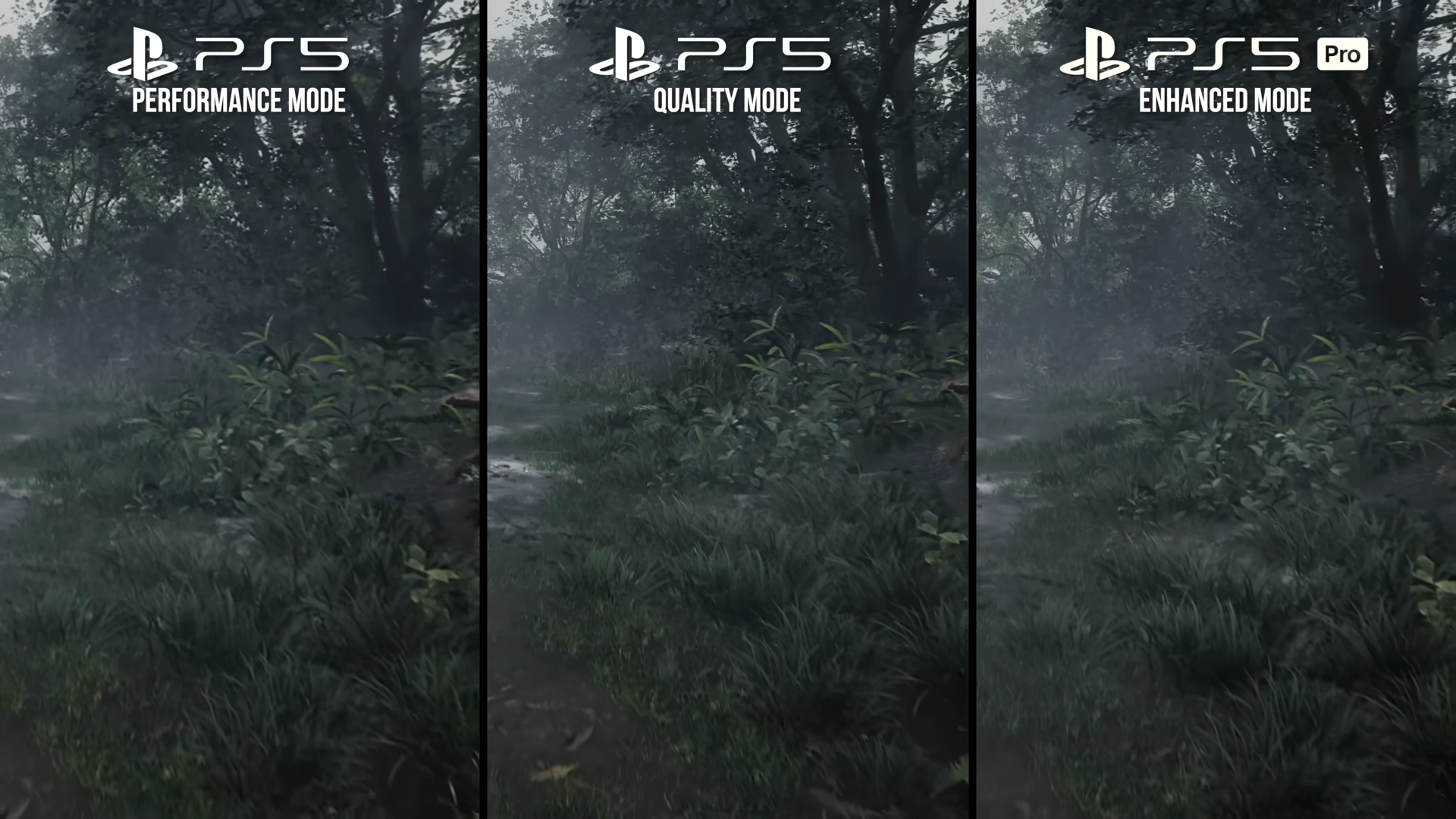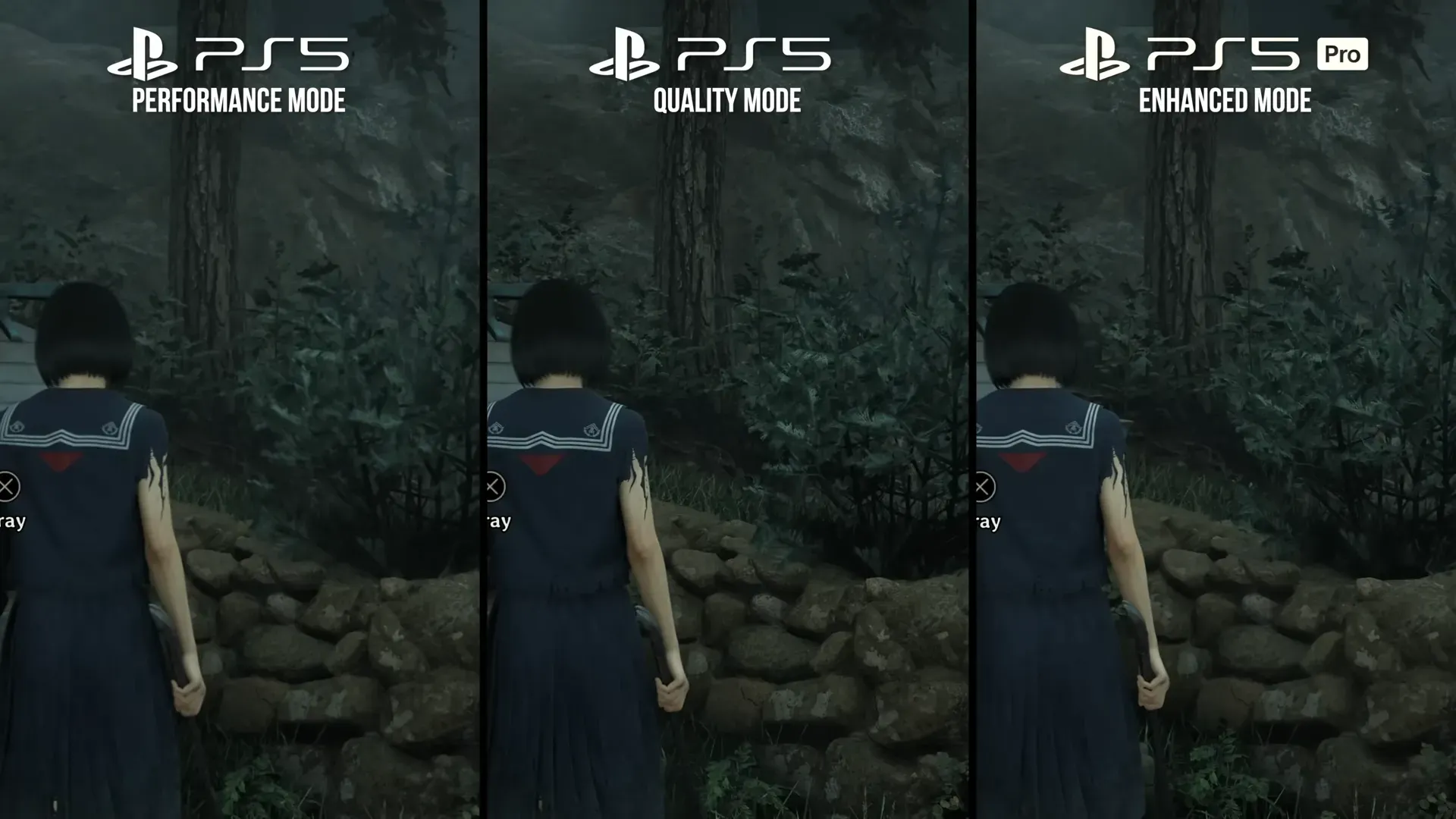Silent Hill f arrives with the kind of performance trade-offs we’ve come to expect from Unreal Engine 5 on consoles: solid frame-rate targets achieved through aggressive resolution scaling and temporal reconstruction. The surprising twist is where each PlayStation lands. The base PS5 generally meets its performance goals with an image that’s cleaner than you might assume, while the PS5 Pro’s upscaler leaves more visible artifacts than you’d want from a premium box.
PS5 and PS5 Pro performance targets and modes
| Platform / Mode | Target frame rate | Reported internal resolution | Output & upscaler | Notable behavior |
|---|---|---|---|---|
| PS5 — Performance | 60fps | Dynamic ~720p down to ~360p (varies by scene) | Upscaled to ~1800p | Generally stable frame delivery |
| PS5 — Quality | 30fps | ~720p internal | Upscaled to 2160p | Occasional dips in cutscenes (to ~27fps) |
| PS5 Pro — Single mode | 60fps | ~720p internal | Upscaled to 2160p via PSSR | Reconstruction artifacts in foliage, shadows, ambient occlusion |
There is disagreement across independent analyses on exact pixel counts. Some estimates put the base PS5 closer to roughly 1080p in Performance mode and ~1440p in Quality, with the PS5 Pro hovering around ~1080p before reconstruction. What’s consistent across tests is the trend: Silent Hill f leans on low internal resolutions to sustain 60fps and reconstructs heavily to hit high display outputs.
Image quality, reconstruction, and why numbers vary
The game relies on temporal upscaling to rebuild detail from low internal resolves, a now-common tactic with UE5 and Lumen. In fast motion or in scenes with dense, fine geometry—think grass, distant foliage, or shadow-heavy interiors—this approach can show its seams as noise, shimmer, or flicker. Motion blur cannot be disabled, which complicates traditional pixel counting and helps explain why resolution estimates vary so widely between outlets and capture methods.

Two things can be true at once: the base PS5’s image can look cleaner than raw numbers suggest (thanks to temporal accumulation and relatively restrained artifacts in its performance path), and the PS5 Pro can look worse than you expect when its reconstruction falters on specific content like foliage or ambient occlusion.
PS5 Pro’s PSSR: what’s happening on screen
On PS5 Pro, the game appears to use Sony’s PSSR reconstruction for its lone 60fps presentation. The upside is consistent frame pacing at 60fps. The downside is noticeable reconstruction artifacts: stippling and noise in shadows and AO, unstable edges on fine vegetation, and occasional “crawl” on distant detail. PSSR cannot be disabled here, and there’s no alternate visual mode on the Pro model, so you’re effectively locked to this presentation until a title update changes the menu or the reconstruction behavior.

It’s worth stressing that artifacts are content-dependent. In many scenes, PSSR looks broadly acceptable; in others, especially with thin geometry and layered transparency, it calls attention to itself—more so when compared side-by-side with the base PS5’s performance path.
Frame-rate behavior in play
- Base PS5 Performance mode holds close to its 60fps target in general gameplay.
- Base PS5 Quality mode is capped at 30fps, with occasional dips during cutscenes.
- PS5 Pro maintains 60fps in its single mode across typical play.
- Across platforms, brief traversal stutter can occur, a familiar UE5 quirk.
The net effect is responsive control on both consoles in their 60fps paths, with image stability being the larger swing factor than frame cadence.
What you can and can’t change
- Base PS5 offers two modes; choose Performance for responsiveness or Quality for a steadier (but lower) frame-rate with higher output resolution.
- PS5 Pro offers a single 60fps presentation using PSSR; there’s no in-game option to switch reconstruction methods or disable PSSR.
- Motion blur is not toggleable, limiting options for reducing perceived smear or for more precise resolution analysis.
Because the Pro’s reconstruction is fixed, display-side tweaks (e.g., reducing sharpness or enabling mild noise reduction) may subjectively mask some artifacting but won’t resolve underlying reconstruction instability. Changes like these are personal preference calls rather than reliable fixes.
Silent Hill f on PlayStation plays to two different strengths. The base PS5 hits its performance and quality targets with image stability that, while far from native, generally holds together. The PS5 Pro delivers the 60fps you’d expect but ties it to reconstruction that can break down in specific content, and you can’t turn it off. If you value feel over fidelity, both consoles are serviceable at 60fps; if you’re sensitive to upscaler artifacts—especially in foliage and shadow detail—the base PS5’s performance path may surprise you for the better until updates arrive.

